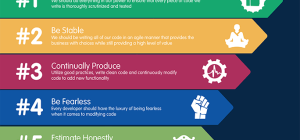 As the workforce becomes increasingly distributed, with remote teams and flexible work arrangements becoming the norm, organizations face new challenges in managing and organizing their records and data. Traditional methods of physical file storage and manual record-keeping no longer suffice in this digital age. That’s where records management software comes in.
As the workforce becomes increasingly distributed, with remote teams and flexible work arrangements becoming the norm, organizations face new challenges in managing and organizing their records and data. Traditional methods of physical file storage and manual record-keeping no longer suffice in this digital age. That’s where records management software comes in.
In this blog, we will explore how records management software is helping remote and distributed teams efficiently organize, access, and collaborate on records.
Centralized Document Repository: One of the critical advantages of records management software for remote teams is the provision of a centralized document repository. Remote workers can securely store and access essential records, regardless of location. This eliminates the need for email attachments and multiple file versions, ensuring everyone can access the most up-to-date information in a single location. A centralized repository allows remote team members to collaborate seamlessly, reducing confusion and improving overall productivity.
Secure Data Access and Permissions: Maintaining data security is crucial, especially when working with remote teams. It allows administrators to assign different access levels and permissions to team members, ensuring that sensitive data remains confidential and only accessible to authorized personnel. This feature is particularly useful for organizations dealing with legal, financial, or healthcare records that require strict compliance with privacy regulations.
Version Control and Audit Trails: Effective collaboration requires proper version control and audit trails. The software enables remote teams to keep track of document revisions, providing a clear history of changes made by different users. This ensures transparency, accountability, and the ability to revert to previous versions if needed. Audit trails also facilitate compliance by documenting who accessed, modified, or deleted records, which is essential for regulatory requirements or internal governance policies.
Advanced Search and Retrieval: Finding specific records or information within a vast repository can be time-consuming. Records management software offers advanced search capabilities, enabling remote team members to quickly locate the documents they need using keywords, metadata, or custom filters. This feature saves time, increases efficiency, and minimizes frustration, allowing remote teams to focus on their core tasks rather than wasting valuable hours searching for critical information.
Collaboration Tools and Workflow Automation: Effective collaboration is vital for remote teams. It often includes collaboration tools such as commenting, annotations, and task assignment features, fostering communication and teamwork. Additionally, workflow automation capabilities streamline repetitive processes, ensuring smooth document routing and approval cycles. With the accessibility to assign tasks, set deadlines, and track progress, remote team members can work together seamlessly, irrespective of their physical location or time zones.
Disaster Recovery and Data Backup: In a remote work environment, the risk of data loss due to hardware failure, cyberattacks, or natural disasters can be higher. It provides robust backup and disaster recovery mechanisms, ensuring the safety and availability of critical records. By automatically backing up data to secure servers or cloud storage, organizations can minimize downtime and easily restore operations in the event of an unforeseen incident, safeguarding their valuable information.
Integration with Communication and Collaboration Platforms: Records management software can enhance remote team collaboration by seamlessly integrating with widespread communication and collaboration platforms. Integration with tools like Slack, Microsoft Teams, or Google Workspace enables remote team members to access and manage records directly from their preferred communication channels. They can share documents, receive notifications and updates, and even initiate record-related discussions without switching between different applications. This integration fosters a more streamlined and efficient workflow, promoting better collaboration and reducing friction in remote team communication.
Analytics and Reporting for Performance Insights: It is equipped with analytics and reporting capabilities and offers valuable insights for remote team performance evaluation and process improvement. It enables organizations to track metrics like document processing time, user activity, or document access patterns. Organizations can identify bottlenecks, optimize workflows, and allocate resources more effectively by analyzing these metrics. Remote team managers can make data-driven decisions to streamline operations, enhance productivity, and identify areas for skill development or training. It’s analytics and reporting features offer valuable visibility into remote team performance and enable continuous improvement in remote work processes.
Conclusion:
As remote and distributed teams become increasingly common, effective records management software becomes paramount. It streamlines workflows, enhances productivity and ensures data security and compliance by providing a centralized repository, secure data access, version control, advanced search capabilities, collaboration tools, and robust data backup. Investing in the right records management software empowers remote teams to efficiently organize and access records, collaborate effectively, and ultimately contribute to the organization’s success in the digital age.








